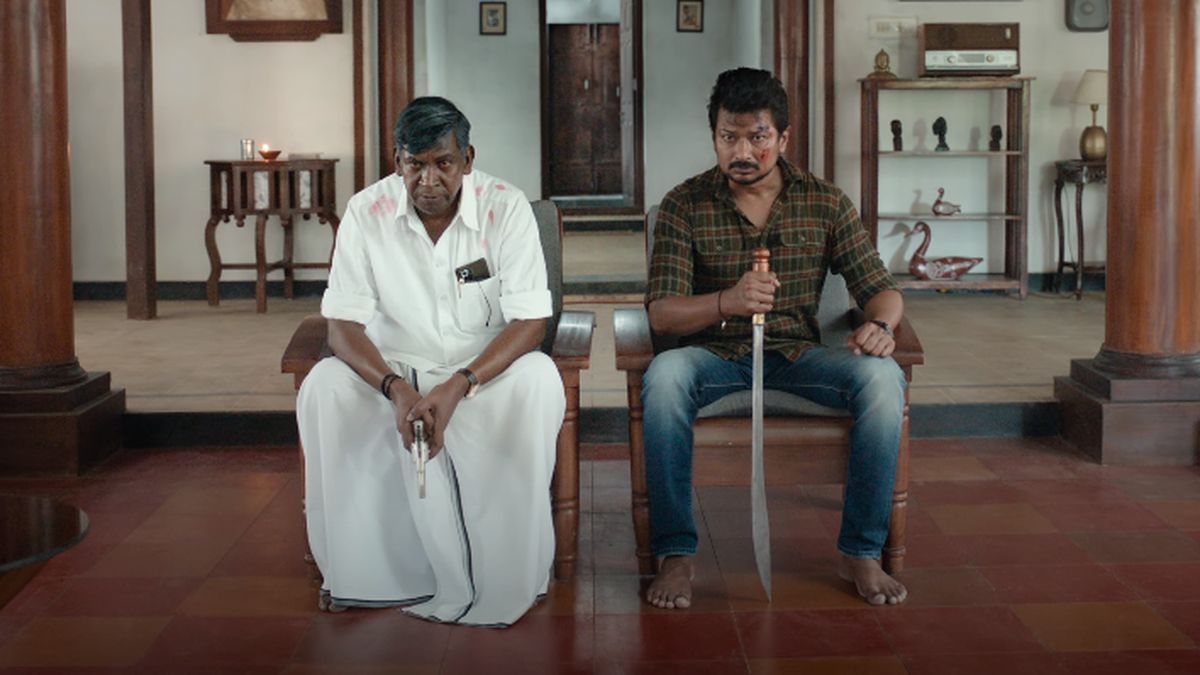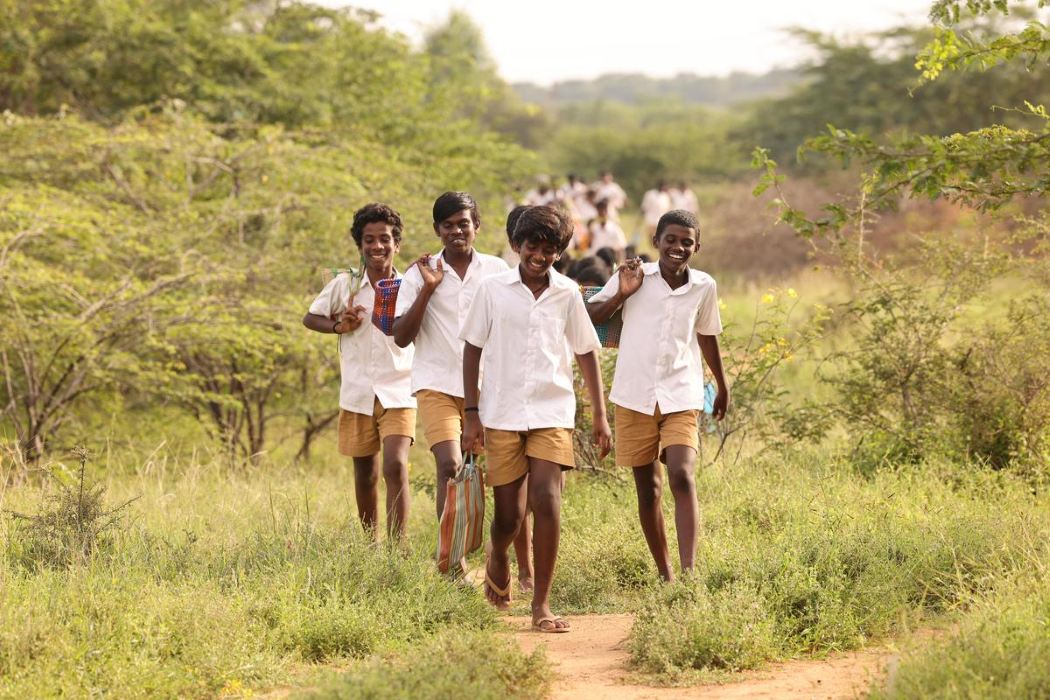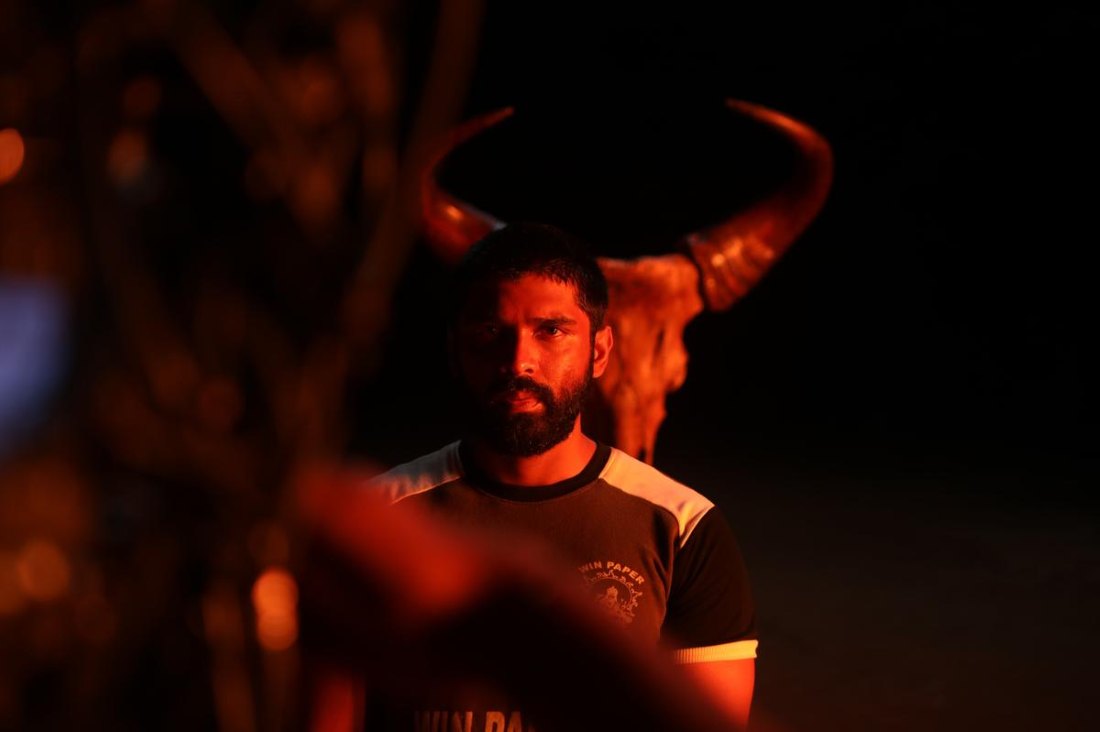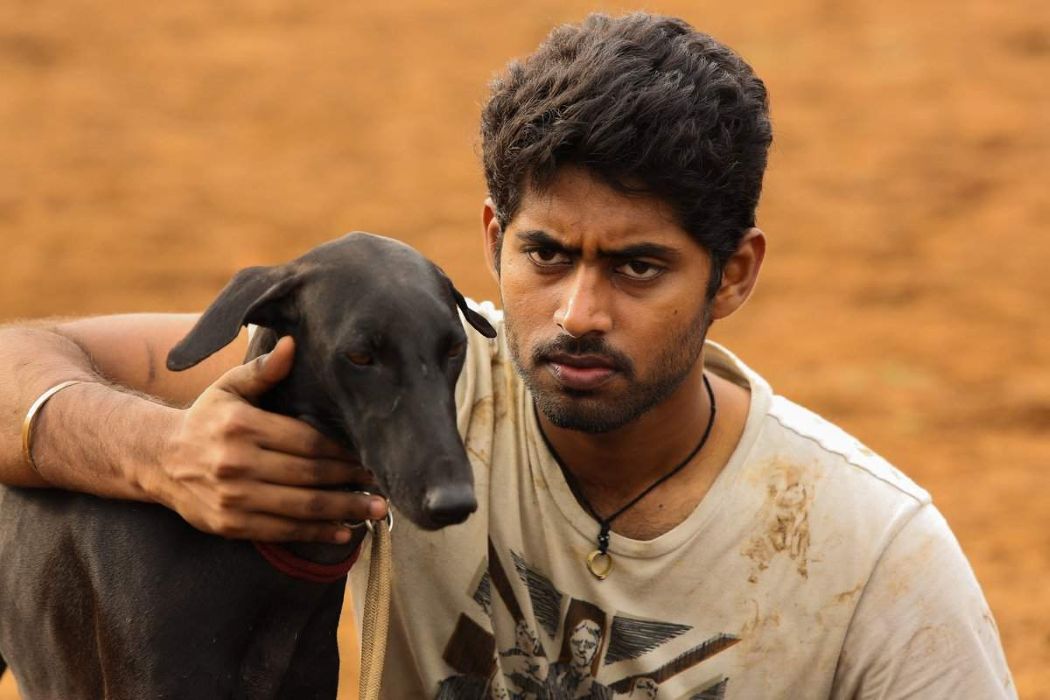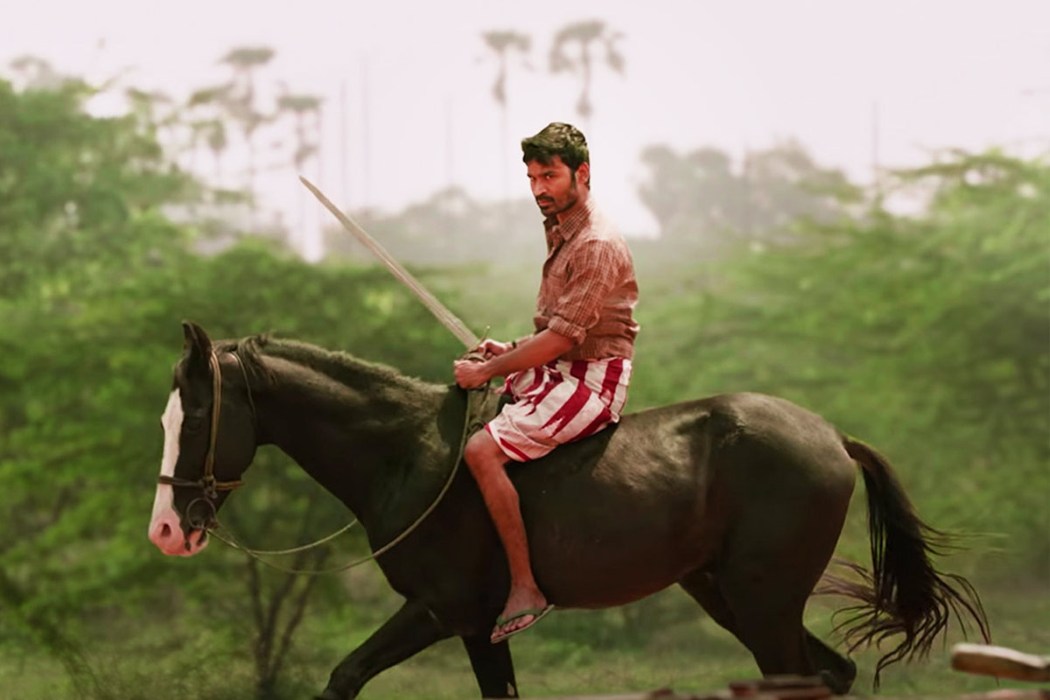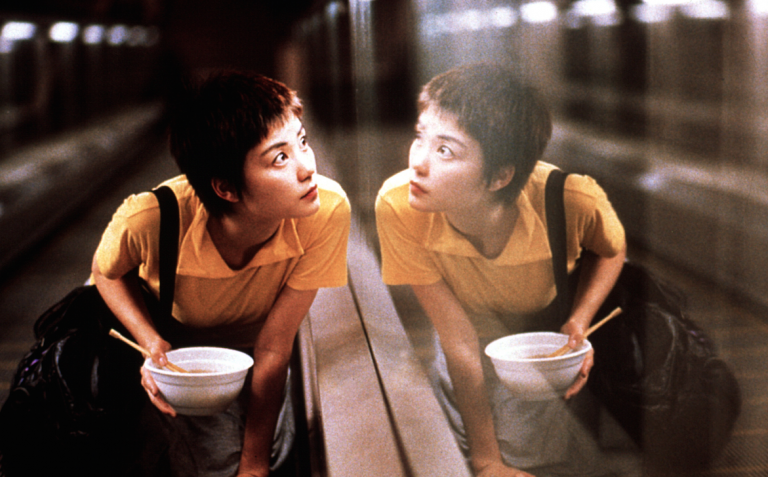Pa. Ranjith and Mari Selvaraj have transformed the landscape of Tamil cinema — though, predictably, a few detractors might claim they’ve “ruined” it. In an industry where Dalit and marginalized identities were long mocked, villainized, or simply erased, these two filmmakers — along with Vetrimaaran — have carved out counter-hegemonic narratives that foreground the subaltern experience. Ranjith’s films like Madras (2014) and Kaala (2018) capture the assertiveness of urban Dalits reclaiming political and cultural space, while Mari Selvaraj’s stories confront the systemic humiliation embedded in rural caste hierarchies, particularly in South Tamil Nadu.
A protégé of director Ram (Katradhu Thamizh, Peranbu), Selvaraj brought a strikingly personal visual grammar to his debut Pariyerum Perumal (2019). Rather than relying on overt messaging, he weaves Ambedkarite ideals through poetic imagery, layered metaphors — especially animal symbolism — and emotionally grounded storytelling.
What’s remarkable is how his films manage to be both politically sharp and emotionally universal, bridging arthouse restraint with mainstream accessibility.. So far, Mari Selvaraj hasn’t made a film that feels hollow or unworthy of discussion. Even his lesser work pulses with intent and sincerity. With that in mind, here’s a look at how his five films rank — each a vital piece in the cinema of resistance.
5. Maamannan (2023)
Maamannan marks a slight stumble in Mari Selvaraj’s otherwise steady filmography — an ambitious work that promises far more than it ultimately delivers. Unlike his first two films, the titular character here isn’t impoverished or powerless; Maamannan (Vadivelu) is an MLA. Yet despite his position, he lives under the shadow of Rathnavelu (Fahadh Faasil), an arrogant, wealthy, and dominant-caste politician.
The central conflict unfolds between Rathnavelu and Maamannan’s son, Athiveeran (Udhayanidhi Stalin), after a confrontation meant to reclaim the MLA’s dignity spirals into open defiance. The film astutely underlines a key truth: in a deeply casteist society, political power alone doesn’t guarantee equality.
Selvaraj doesn’t merely advocate for inclusivity; he also urges the oppressed to shed internalized deference — the invisible chains that sustain hierarchy. Yet, for all its thematic potency, Maamannan falters in the execution. The second half retreats into conventional, politically cautious territory, blunting what could have been a searing critique.
At its pre-release event, Mari Selvaraj described Maamannan as his answer to Thevar Magan (1992). That context is crucial: in the Kamal Haasan–Sivaji Ganesan classic, Vadivelu played Esaki, a marginalized man punished for transgressing caste norms. Here, Mari reimagines that same actor’s journey, granting Esaki’s spiritual successor a voice and agency long denied. It’s a powerful idea — but one that the film realizes only partially.
Despite its intentions to reframe dominant-caste patriarchal narratives, Maamannan never quite achieves the social or emotional impact it aims for. Udhayanidhi’s performance lacks the depth needed to convey his character’s trauma and defiance, while Vadivelu’s subdued portrayal feels almost too restrained. Fahadh Faasil, meanwhile, dominates every frame with such magnetic cruelty that Rathnavelu inadvertently becomes the film’s most memorable — and, disturbingly, most celebrated — figure among certain audiences. The director’s indulgence in slow-motion shots and stylized depictions of Rathnavelu’s swagger only heightens that imbalance.
The film also exposes some recurring weaknesses in Mari Selvaraj’s writing: his underwritten female characters and his overreliance on animal symbolism, which here feels heavy-handed rather than evocative. For all its sincerity and striking moments, Maamannan remains a film of fascinating ideas that never quite find a fully realized form — more a passionate manifesto than a cohesive cinematic statement.
4. Vaazhai (2024)
Although Mari Selvaraj’s films often contain strands of his personal experience, Vaazhai draws from a tragic incident in his childhood — a lorry accident that claimed the lives of several plantain labourers, among them his sister.
Set in rural Tamil Nadu during the late 1990s, the film unfolds through the eyes of a young boy, Sivanaindhan. A bright student with a tender crush on his teacher, Poongodi, Sivanaindhan spends his days balancing school life and his friendship with Sekar, with whom he loves arguing about Rajini-Kamal supremacy. Yet unlike most school-children, Sivanaindhan dreads weekends, when he must help carry bunches of plantains from the fields to the truck — a gruelling task shared by his mother, elder sister Vembu, and other labourers from the village.
While Vaazhai certainly contains grim passages — especially towards the end — it is the closest Mari Selvaraj has come to making a light-hearted drama. The boy’s affection for his teacher is handled with warmth and dignity, and there are no overdrawn villains; the injustices and humiliations that befall his family emerge naturally from the rigid social hierarchy. Selvaraj’s signature use of montage and parallel editing sustains a sense of dread throughout, yet he chooses to reveal the feared tragedy only in its haunting aftermath.
Even so, the 136-minute runtime feels slightly stretched for this contained narrative. Although it avoids most conventional tropes, the teacher-student subplot and a few drawn-out stretches occasionally seem to pad the runtime. Selvaraj nevertheless conveys the pain and trauma of unimaginable loss with compassion and emotional precision. The final moments edge into melodrama, but these excesses never dilute the film’s cumulative power. Despite its minor flaws, Vaazhai remains a deeply affecting and personal work — a reflection on childhood, loss, and memory.
Recommended: 15 Great Movies About Caste Discrimination, Dalit Resistance, And Ambedkarite Politics In India
3. Bison Kaalamaadan (2025)
Mari Selvaraj’s animal metaphors are tightly woven into his protagonists’ journeys. In his latest film, Bison, the titular animal signifies the kind of rage and strength a young man must channel to overcome entrenched systemic oppression. Based loosely on the story of Arjuna-Award-winner Manathi Ganesan, and set once again in 1990s rural Tamil Nadu, the film follows Kitaan (Dhruv Vikram), an aspiring kabaddi player who feels cursed to remain invisible.
Kitaan’s father (a brilliant performance by Pasupathy) warns him that even a slight provocation can trigger bloodshed and generational rivalries. Any attempt to break free might cost dignity or even life. The few encouraging voices in his life are his PT teacher and his elder sister.
Parallel to Kitaan’s personal struggle is the long-standing rivalry between Pandiaraja (Ameer) and Kandhasamy (Lal). What started as a personal feud later converted into a full-blown caste issue. Although these men are not central to Kitaan’s story, they play a surprising role in his journey towards achieving his dreams. The bloody rivalry and the caste politics around them are drawn from real-life events, and to Selvaraj’s credit, he handles their flaws and brutal fates without glossing them over.
Bison borrows tropes of the sports-drama framework, but it refuses to be strictly one. It’s more about the myriad dangers Kitaan faces off the field — for only when he wins does it become not just his triumph, but a triumph of his nation, not merely “his people’s”. One does wish that Selvaraj had spent a little more time on Kitaan’s strategies in the kabaddi court instead of leaning on a somewhat redundant romantic subplot.
While that subplot does underscore the intercaste rivalry, the film might have found other, stronger ways to emphasise that aspect rather than rely on a weakly written love interest. Some scenes in Bison echo moments from Karnan, although this film has a softer tone and chooses to play it a bit safer.
2. Pariyerum Perumal (2019)
Mari Selvaraj’s Pariyerum Perumal (2018) stands as one of the most significant directorial debuts in Tamil cinema in recent decades. Through its unflinching yet empathetic portrayal of caste hierarchies, the film constructs a deeply personal narrative that resonates beyond its specific social context. The protagonist, Pariyan (Kathir), hails from an oppressed community and has newly enrolled in a government law college.
The film opens with the death of his dog Karuppi — an act of caste violence that becomes both a private trauma and a metaphor for systemic cruelty. When a professor ridicules Pariyan’s poor command of English, his classmate Jothi steps in to help him. Their friendship, innocent at first, is met with brutal disapproval from Jothi’s dominant-caste family, whose violent response underscores how caste operates through both overt and invisible mechanisms of control.
What distinguishes Pariyerum Perumal from other socially conscious films is Selvaraj’s refusal to sanctify or villainize his characters. His cinema resists the didactic impulse common in Indian social dramas, instead locating structural critique within human vulnerability. Selvaraj also includes a rare depiction of gender non-conformity in the figure of Pariyan’s father, a folk performer who cross-dresses — an empathetic portrayal almost absent in mainstream Tamil cinema.
The film ultimately functions as both social commentary and self-interrogation. By presenting the protagonist’s education as a process of self-realization rather than assimilation, Pariyerum Perumal challenges viewers to confront the persistence of caste-based inequities that continue to mirror the film’s fictionalized events. Its enduring relevance lies in that mirror: the Tamil Nadu of Pariyerum Perumal is still the Tamil Nadu or India outside the theatre. The film’s influence has extended beyond Tamil cinema: it was officially remade in Hindi as Dhadak 2 (2025), bringing Selvaraj’s narrative and its interrogation of caste to a wider Bollywood audience.
1. Karnan (2021)
Few films succeed in making the audience feel a protagonist’s righteous anger and understand its origins in personal trauma or systemic cruelty. When violence against dehumanization becomes an act of self-assertion, it transcends revenge and becomes resistance. Mari Selvaraj’s Karnan (2021) is one such film — a bold, unsettling, and profoundly humane chronicle of revolt.
Selvaraj’s second feature, anchored by an extraordinary performance from Dhanush, is widely perceived to draw from the 1995 Kodiyankulam caste violence, though the filmmaker has clarified that it is a fictional story inspired by several real events and collective memories.
The film is set in the fictional village of Podiyankulam, where an oppressed community has been denied a bus stop — a deceptively simple grievance that exposes how systemic denial operates. The absence of a bus stop, a seemingly trivial omission in urban life, becomes a metaphor for institutional invisibilization: the community is cut off from education, healthcare, and livelihood, forced to live unseen.
Karnan, as portrayed by Dhanush, embodies this restless stagnation — a man who keeps walking but never reaches anywhere. His anger is both individual and inherited, the expression of generations forced to swallow humiliation. When the people of Podiyankulam finally resist, their uprising is met with state-sanctioned violence. Selvaraj refuses to sanitize this clash; the film stages righteous rage as an ethical response to systemic cruelty, not an aberration.
Though we know violence begets violence and that this war for self-respect will end in irreversible tragedy, “Karnan” vividly showcases the designs of a repressive caste-driven system, where there is no room for debate or escape, as in the case of Pariyan or Kitaan. Karnan also marks the apex of Selvaraj’s animal symbolism. The recurring image of the donkey, bound and beaten yet enduring, becomes a potent emblem of both suffering and resilience.
Through these motifs, Selvaraj situates caste oppression within a larger ecological and spiritual order — one where land, animal, and human are all wounded by hierarchy. Though Selvaraj may go on to craft subtler or more mature explorations of caste hegemony, Karnan stands unmatched in its unflinching cinematic articulation of righteous rage — a fury that feels earned, necessary, and devastating.

